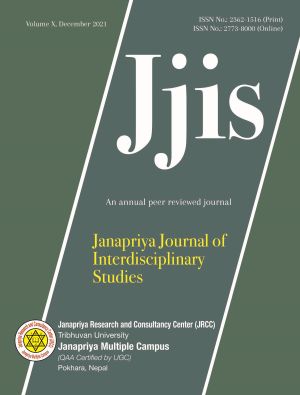Assessing Payment for Ecosystem Services of Panchase Conservation Area: Exploring the Potentialities
DOI:
https://doi.org/10.3126/jjis.v10i01.42584Keywords:
Downstream, payment for ecosystem services, upstream, watershed protection, willingness to pay, willingness to acceptAbstract
Adoption of “Payment for Environmental Services (PES)” scheme can be one option to protect the forest area and the Phewa Lake for sustaining the existing benefits. The study was carried out to explore the adoption possibility of PES mechanism in Panchase Conservation Area (PCA) for the sustainable management of the forest and the Phewa Lake. The study was focused on people of Bhadaure and Chapakot villages of Panchase area as upstream dwellers and different downstream communities benefitted from the lake. Major environmental services were prioritized for both upstream and downstream dwellers and the major impacts on the downstream communities were also found out. Multiple linear regression model was adopted to assess the factors affecting the downstream communities for providing suitable incentives to upstream dwellers. Watershed protection was found to be the major environmental service prioritized by both upstream and downstream respondents. Most of the people of both upstream and downstream communities are willing to accept (WTA) and pay (WTP) for the protection of the prioritized environmental service. Hotel communities were seem to have highest WTP followed by boating, fishing and agricultural communities. Also, Income, education, household member and residential distance were statistically significant to WTP of downstream beneficiary group. Based on the WTP of the downstream beneficiary groups, it is concluded that the area is potential for initiating PES mechanism for the sustainable conservation of watershed and regulate benefits on sustained basis. Education based activities should be organized to enhance participation of more beneficiaries and upstream dwellers whereas proper policy mechanism should be formulated for assuring community people before the implementation of PES.




